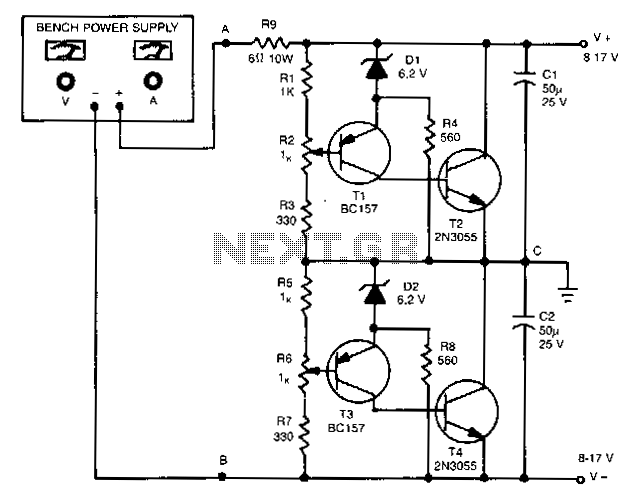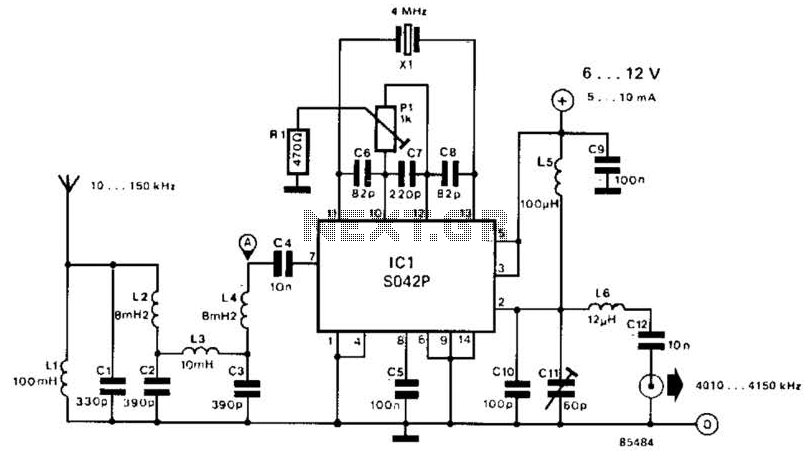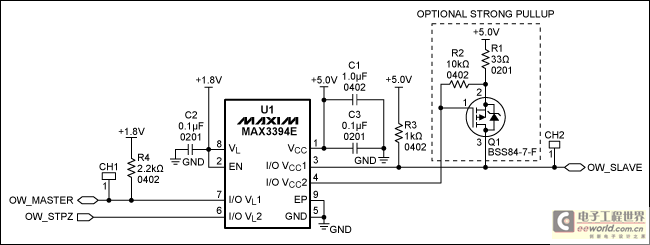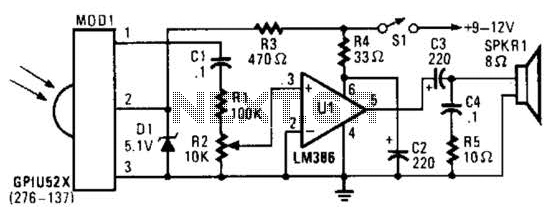
Frequency/Voltage Converter With Sample And Hold

U1 is a frequency-to-voltage converter that feeds a sample-and-hold circuit utilizing an LF381 operational amplifier. An LF351 provides a 10-V maximum scale output. The circuit generates a 1-V output per kHz frequency.
The described circuit employs a frequency-to-voltage conversion technique, where the component U1 converts an input frequency signal into a corresponding output voltage. This is achieved using an LF381 operational amplifier, which is known for its high performance in precision applications. The sample-and-hold circuit plays a critical role in capturing the output voltage level at specific intervals, ensuring accurate representation of the frequency signal over time.
The LF351 operational amplifier is integrated into the design to provide a stable and precise 10-V maximum scale output. This allows the circuit to handle a wide range of input frequencies while maintaining linearity and minimizing distortion. The output characteristic of 1-V per kHz indicates that for every kilohertz increase in the input frequency, the output voltage will increase by 1 volt. This linear relationship simplifies the interpretation of the output voltage in relation to the input frequency, making it suitable for applications requiring frequency measurement and conversion.
Overall, the combination of the LF381 and LF351 in this circuit design ensures high accuracy and reliability, making it effective for various electronic applications where frequency-to-voltage conversion is necessary. U1 is a frequency/voltage converter, feeding sample-and-hold circuit using an LF381. An LF 351 provides 10-V M-scale output. The circuit produces 1-V/kHz output.
The described circuit employs a frequency-to-voltage conversion technique, where the component U1 converts an input frequency signal into a corresponding output voltage. This is achieved using an LF381 operational amplifier, which is known for its high performance in precision applications. The sample-and-hold circuit plays a critical role in capturing the output voltage level at specific intervals, ensuring accurate representation of the frequency signal over time.
The LF351 operational amplifier is integrated into the design to provide a stable and precise 10-V maximum scale output. This allows the circuit to handle a wide range of input frequencies while maintaining linearity and minimizing distortion. The output characteristic of 1-V per kHz indicates that for every kilohertz increase in the input frequency, the output voltage will increase by 1 volt. This linear relationship simplifies the interpretation of the output voltage in relation to the input frequency, making it suitable for applications requiring frequency measurement and conversion.
Overall, the combination of the LF381 and LF351 in this circuit design ensures high accuracy and reliability, making it effective for various electronic applications where frequency-to-voltage conversion is necessary. U1 is a frequency/voltage converter, feeding sample-and-hold circuit using an LF381. An LF 351 provides 10-V M-scale output. The circuit produces 1-V/kHz output.





